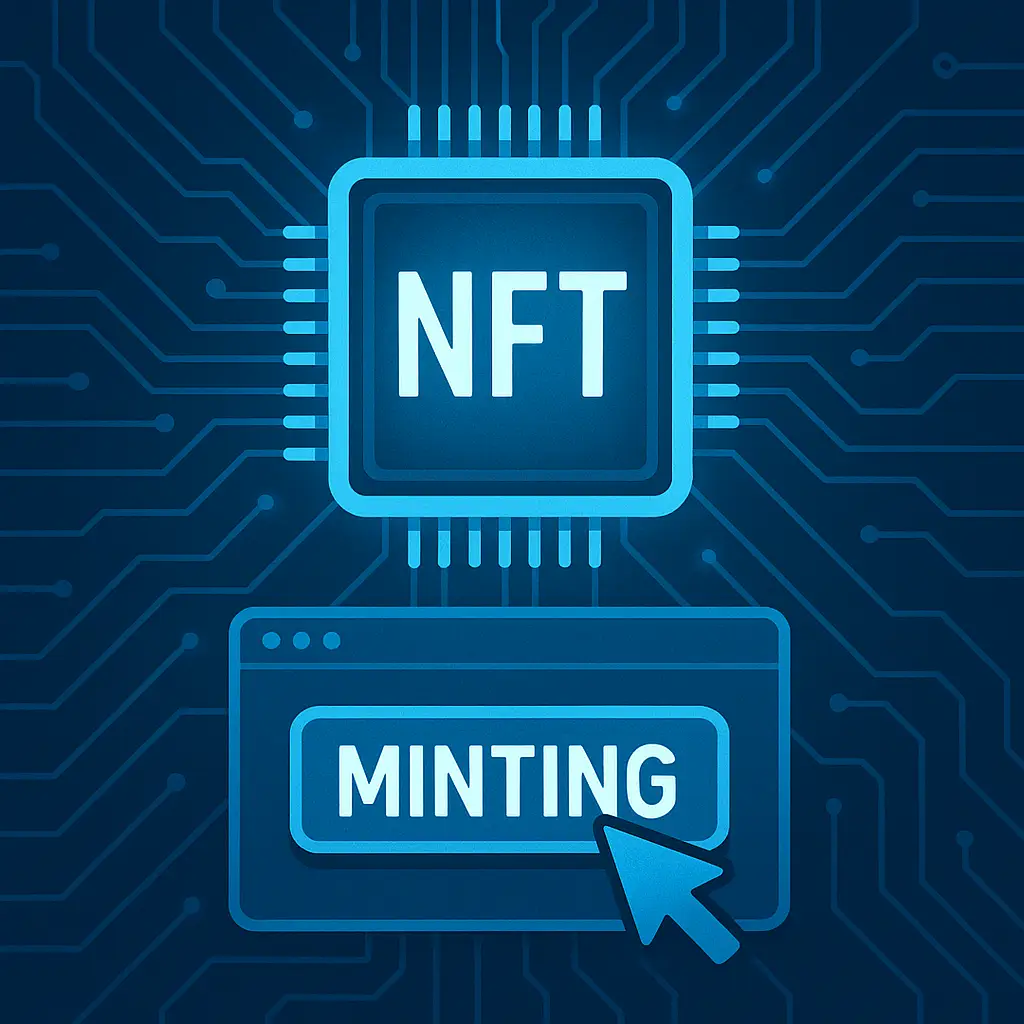Introduction
Ever heard of NFTs? They’ve become a super cool way to truly own things online – and even some real-world stuff! Unlike regular cryptocurrencies like Bitcoin, which are all the same, NFTs are special digital tokens, each completely unique. From awesome digital art and catchy music to virtual land and even website names. NFTs are opening up a brand new world where artists and collectors can connect directly.
What Exactly is a Non-Fungible Token (NFT)?
Think of an NFT as a special digital certificate for something unique. It’s a digital token that represents a specific item – maybe a piece of art you love, a funny video clip. NFT acts like a secure, digital link to it, kind of like a digital passport. This passport’s ownership details are recorded on a super secure digital record called a blockchain. So, an NFT basically proves that you are the real owner of that specific digital (or even physical) thing.
Read More: Web3 Unveiled: Your Guide to the Decentralized Internet
A Quick Look Back at NFTs:
- 2014 – The First Spark: A digital artwork called “Quantum” by Kevin McCoy is often seen as the very first NFT.
- 2017 – Digital Kitties Take Over: Remember CryptoKitties? This online game let people collect and trade unique digital cats.
- Making it Official: In 2018, Ethereum created a standard called ERC-721. Later, ERC-1155 came along to make things more efficient for managing multiple NFTs at once.
How Do NFTs Actually Work?
- Making an NFT (Minting): When someone “mints” an NFT, they’re basically creating a new digital token on a blockchain. A smart contract takes all the important info about the item – its name, what it’s about, where the actual file is, and who owns it – and secures it in a new block on the blockchain.
- Each One is Special: Every single NFT has its own unique ID and is linked to the digital wallets of the person who created it and the current owner. Even if someone makes thousands of copies of the same image, each NFT will have a different, unique ID.
- Tracking Ownership: When an NFT is sold or given to someone else, this transfer of ownership is recorded on the blockchain. This creates a permanent, unchangeable history of who has owned that NFT.
- NFTs on Bitcoin Too? Interestingly, NFTs can even exist on the Bitcoin blockchain now, called “Ordinals.” Instead of creating separate tokens, they work by giving unique serial numbers to the smallest units of Bitcoin.
Cool Things You Can Do With NFTs:
- Awesome Digital Art & Collectibles: Think of things like CryptoPunks and Bored Ape Yacht Club – unique digital artworks and character collections that have become really popular.
- Gaming & Virtual Worlds: In some online games, you can actually own items as NFTs, like land in Decentraland, and trade them with other players.
- Photos & Music: Photographers and musicians can use platforms to turn their work into NFTs, sell limited editions or special rights, and even automatically get paid royalties every time their NFT is resold.
- Website Names & Digital Identity: NFTs can even represent ownership of website domain names and your online identity, making them more secure.
- Sharing Expensive Stuff (Fractionalized Assets): Imagine being able to own a small piece of a really expensive painting or a classic car! NFTs can be “sliced” into smaller pieces, allowing more people to invest.
Why are NFTs Great?
- Selling Directly to Fans: Artists and creators can sell their work directly to the people who love it, without needing galleries or big companies.
- Getting Paid Over and Over: Smart contracts can be set up so that the original creator gets a percentage of the money every time their NFT is resold in the future.
- Easier to Buy and Sell: Turning things into NFTs can make them easier to buy and sell, especially when you can own a fraction of something valuable.
Things to Keep in Mind About NFTs:
- Digital Copies are Still a Thing: While you own the unique NFT, it doesn’t stop people from making copies of the actual digital file (like an image). Protecting the actual artwork still often relies on traditional legal methods.
- Not Everything Sells: Just because you have an NFT doesn’t mean someone will want to buy it. Some NFTs might not be very popular, and you could end up stuck with them.
- Environmental Concerns: Some blockchains use a lot of energy, which has raised concerns about the environmental impact of NFTs. However, many blockchains are working on becoming more eco-friendly.
NFTs in the Real World:
Even big companies are starting to use NFTs:
- Showing Off Your Collection: Social media sites like Reddit and Instagram now let you prove you own an NFT and use it as your profile picture.
- Tickets and Memberships: Events and clubs are issuing NFT tickets that can also act as cool digital souvenirs or membership passes.
In Conclusion:
NFTs are changing the way we think about owning, buying, and selling things in the digital world. By using the secure and transparent technology of blockchain and the smart rules of smart contracts, NFTs are creating exciting new opportunities for creators, collectors, and communities. As this technology gets more mature and addresses some of its challenges, the idea of truly owning things online is only going to become more powerful.


